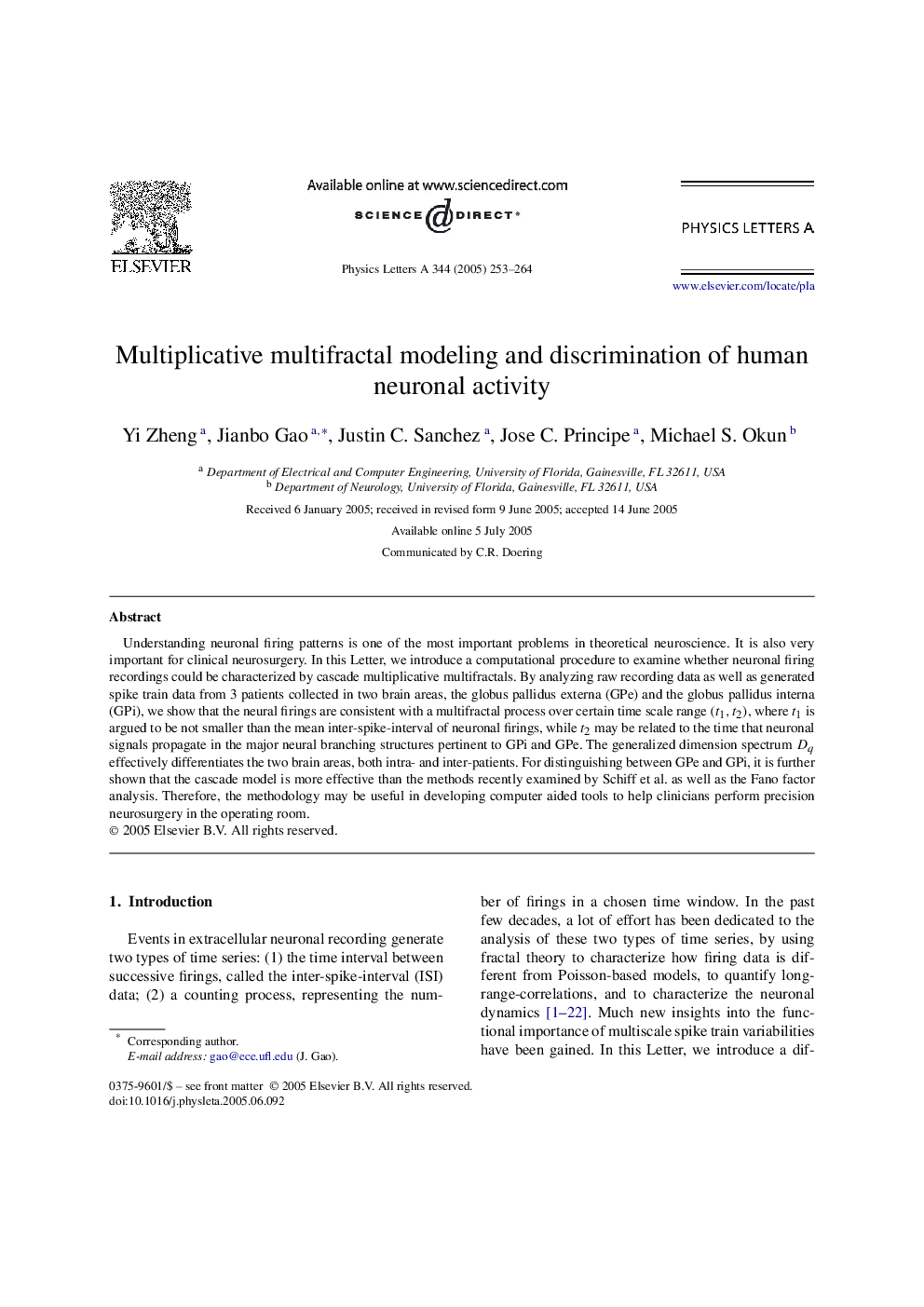| Article ID | Journal | Published Year | Pages | File Type |
|---|---|---|---|---|
| 9867945 | Physics Letters A | 2005 | 12 Pages |
Abstract
Understanding neuronal firing patterns is one of the most important problems in theoretical neuroscience. It is also very important for clinical neurosurgery. In this Letter, we introduce a computational procedure to examine whether neuronal firing recordings could be characterized by cascade multiplicative multifractals. By analyzing raw recording data as well as generated spike train data from 3 patients collected in two brain areas, the globus pallidus externa (GPe) and the globus pallidus interna (GPi), we show that the neural firings are consistent with a multifractal process over certain time scale range (t1,t2), where t1 is argued to be not smaller than the mean inter-spike-interval of neuronal firings, while t2 may be related to the time that neuronal signals propagate in the major neural branching structures pertinent to GPi and GPe. The generalized dimension spectrum Dq effectively differentiates the two brain areas, both intra- and inter-patients. For distinguishing between GPe and GPi, it is further shown that the cascade model is more effective than the methods recently examined by Schiff et al. as well as the Fano factor analysis. Therefore, the methodology may be useful in developing computer aided tools to help clinicians perform precision neurosurgery in the operating room.
Related Topics
Physical Sciences and Engineering
Physics and Astronomy
Physics and Astronomy (General)
Authors
Yi Zheng, Jianbo Gao, Justin C. Sanchez, Jose C. Principe, Michael S. Okun,
